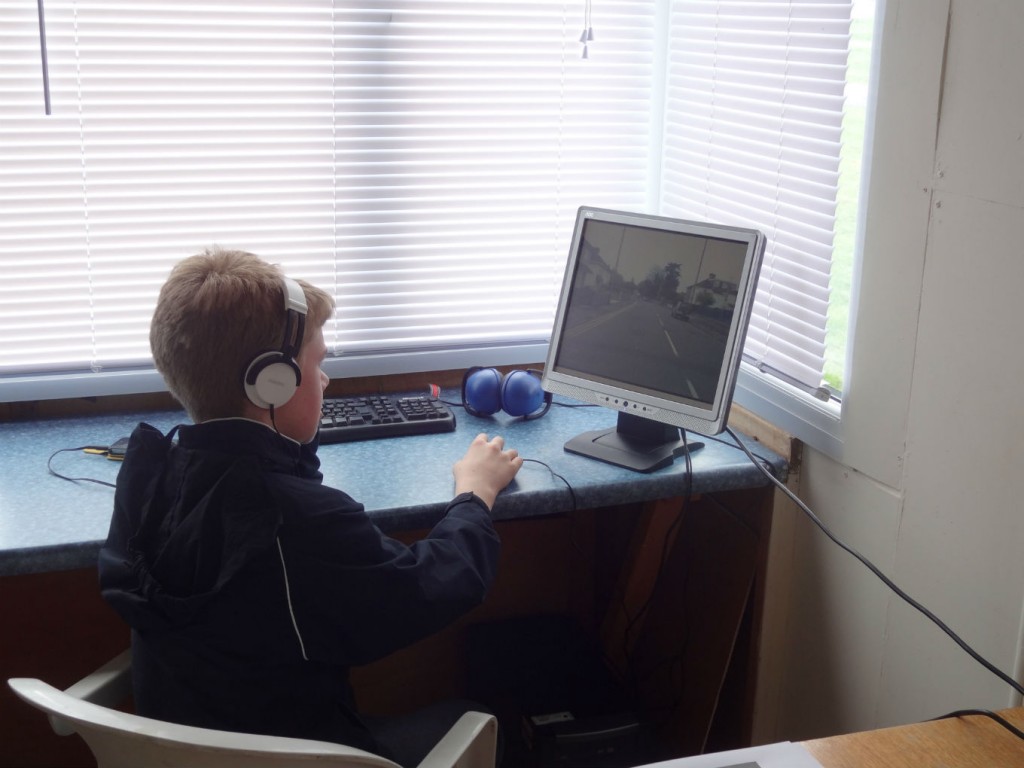The ultimate driving course; core driving skills will be developed with a professional trainer in a safe environment. Young drivers from 13+ can engage in driving theory, develop an understanding of road traffic hazards and develop peer learning, tutoring and feedback skills – so essential to the learning process. The Autotutors Young Driver will be at a distinct advantage when obtaining a provisional driving licence in the future.
Autotutors YDS Level 1 – 2 – 3 – 4 are outlined below, each level is priced at £99.00 and provides a natural progression of learning following the DVSA syllabus and teaching style. At completion of Level 4 the young driver will have practiced the DVSA standard manoeuvres, with control, accuracy and observing safety priorities at all times.
Tim teaching close clutch control at Lleweni Parc.
Level 1 (3 hours)
Practical
The initial session is designed to get the wheels in motion. The young driver will understand how to set the optimum seat position and set up the mirrors correctly. The POM routine is taught to help the driver develop an independent method of PREPARATION and planning to move the car away smoothly. Blind vision areas are identified and full OBSERVATIONS when moving away are practiced. Smooth driver inputs are developed to build confidence and enjoyment in MANOEUVRING the car and matching the gear to the speed. The correct steering method is taught to develop skill in vehicle positioning.
Classroom
Young drivers learn about the calculation of miles per hour to feet/metres per second and how drivers can use gears to control speed. Reaction time and the factors that can increase time are discussed and explored.
Review all YDS courses in brief.
Buy an open ended gift voucher.
Read our 5 star customer ratings.
Review Autotutors road driving lessons.
Level 2 (3 hours)
Practical
The second session develops the young driver’s close clutch control applied to a replica junction. Effective observation on approach is taught to improve anticipation, the use of signals and timing is developed to encourage independent decisions. Gear selection and down change technique is improved to build confidence in the drivers control. Moving away from a hill and reversing in a straight line is integrated to prepare the young driver for the next development stage of the DVSA test manoeuvres.
Classroom
The aim of the classroom session is to explain how the young drivers can correctly identify speed limits. Why speed limits are important is reviewed in the context of other road users such as pedestrians, two wheel users and sharing the roads.
Level 3 (3 hours)
Practical
Session three refines close clutch control, the young driver is taught the turn in the road manoeuvre, developing control, observations and accuracy. Hill start on an angle is introduced to further improve the skills of observation, signals and timing. Emergency braking and the benefits of modern ABS systems are explored to develop confidence in steer and avoid situations.
Classroom
The young drivers discuss the use of speed and the importance of hazard assessment. Q&A leads to a video demonstrating the real outcome of kinetic energy during emergency braking in a car.
Level 4 (3 hours)
Practical
The final and fourth session develops all of the skills that have been learnt to date. Close clutch control and effective observations are used to learn the bay park and parallel park manoeuvres with control and accuracy. The application and timing of signals is developed in relation to the MSPSLM routine to improve the drivers independent decision making.
Classroom
The classroom session explores the effects of alcohol on the driver and explains the unit calculation method. The alcohol elimination process and the myths are clarified. Mobile phone and gadget use is discussed linking back to the knowledge gained on reaction times compared to vehicle speed – time and distance.

A young driver developing an understanding of hazard awareness.